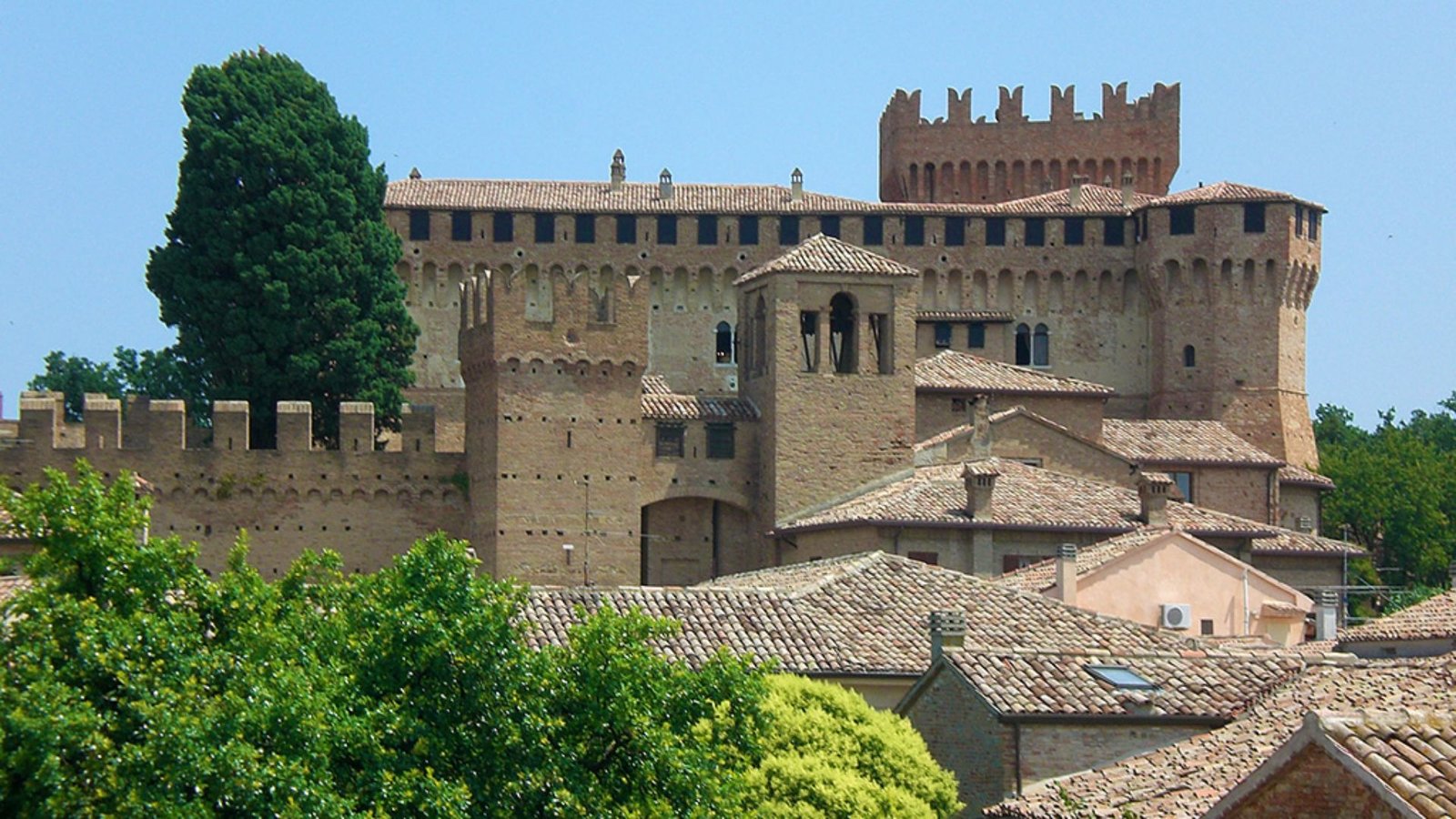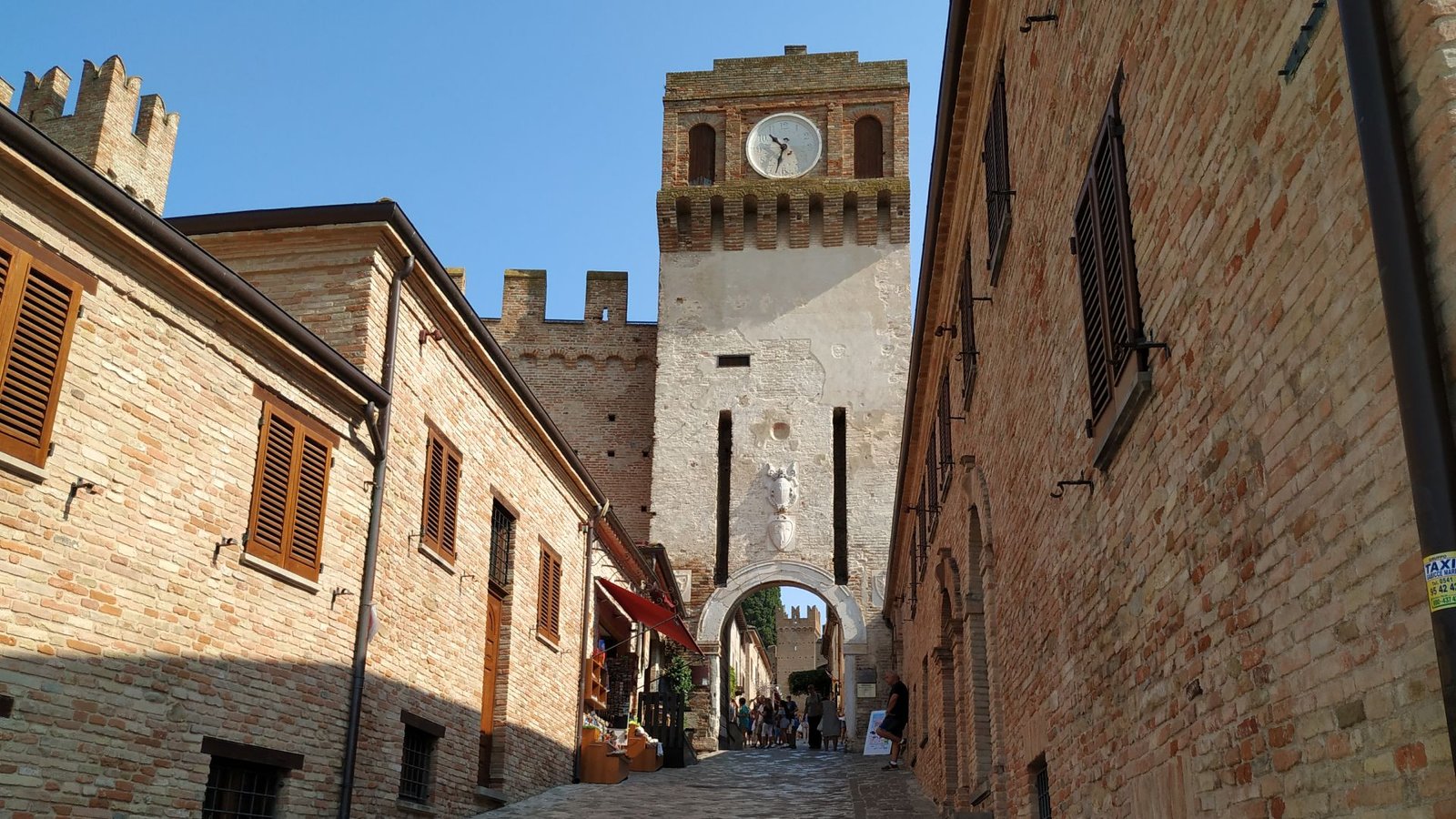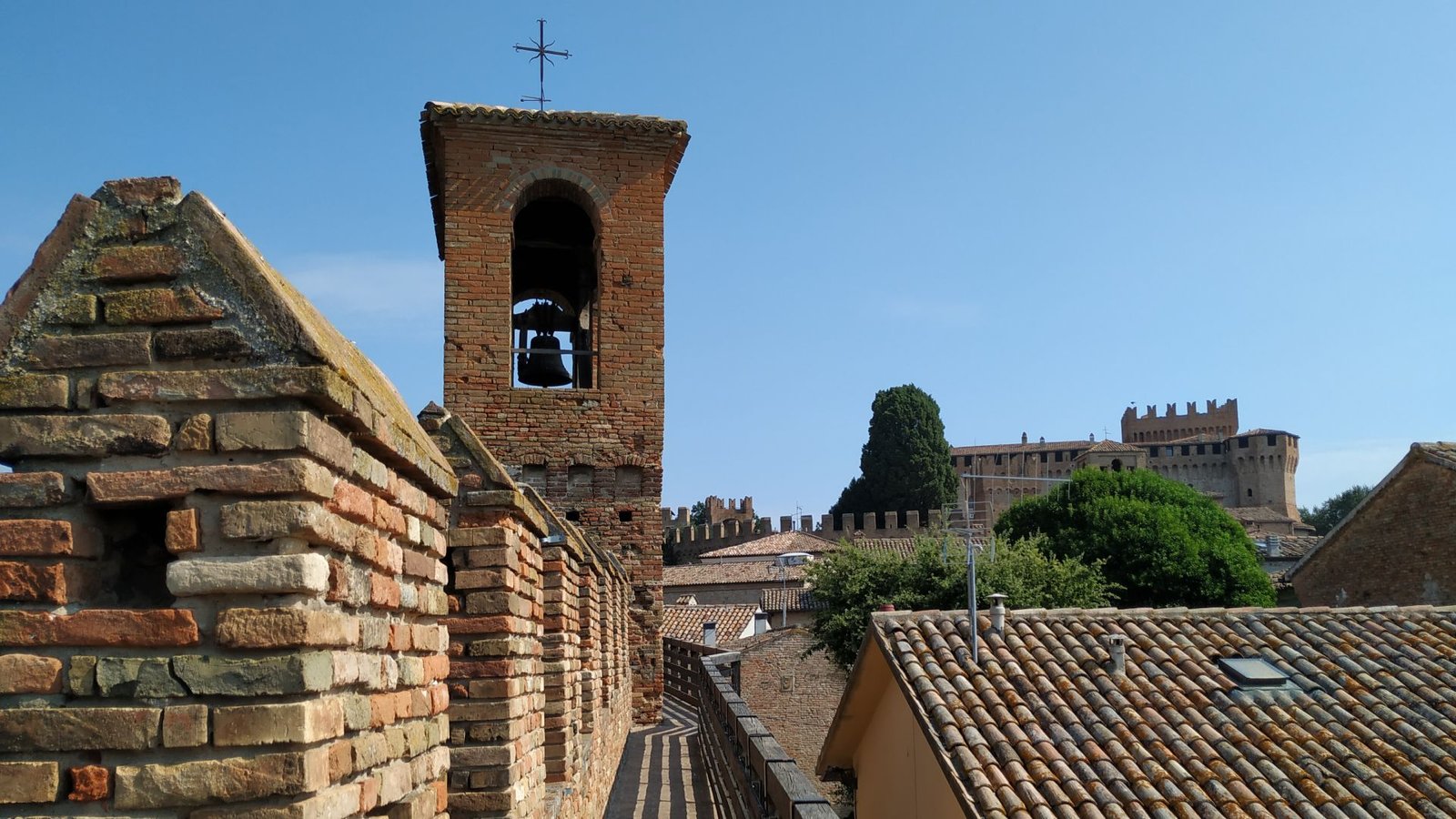The ancient medieval town of Gradara, surrounded by its crenellated walls, stands a few kilometers from the Adriatic Riviera, on the border between Emilia Romagna and Marche. From the highest point on the hill (142 m above sea level), the fortress dominates the handful of houses that make up the village.In July and August, Gradara is literally taken by storm by tourists, and costumed historical re-enactments follow one another, which, with their medieval atmosphere, allow for a journey into the past. But there is a reason why the fortress is even more famous: it was the scene in September 1289 of the ill-fated love affair between Paolo and Francesca, described by Dante in the Fifth Canto of the Inferno.
In Francesca's room one can see the lectern that held the "convict" book in which the forbidden loves of Lancelot and Guinevere were told, and the trapdoor to the secret passageway that allowed Paul to reach his beloved.



But who are Paolo and Francesca?
Francesca da Polenta was the daughter of Guido Minor Lord of Ravenna and Cervia who, in 1275, betrothed her to Giovanni Malatesta known as Gianciotto, son of Malatesta da Verucchio known as the Old Mastin.Malatesta da Verucchio had four sons, Giovanni, Paolo il Bello, Malatestino dall'Occhio and Pandolfo. The Malatestas were Guelphs, as was Guida da Polenta, lord of Ravenna, and to strengthen their alliance a marriage was decided between the eldest son Gianciotto, a valiant man of arms, and the beautiful Francesca, daughter of Guido.Since Gianciotto was far from handsome, Francesca was introduced to Paul "the Handsome," through whom Gianciotto married her by proxy in 1275."Galeotto was'l book and he who wrote it."
When Francesca realized who her groom really was she fell into despondency.Gianciotto later became Podestà of Pesaro. A provision of the time forbade the Podestà, who had to be a foreigner to offer greater guarantees of equanimity, from bringing his family with him to the new city, and so Francesca went to live in the nearby fortress of Gradara, built by order of the Mastin Vecchio.In that period of loneliness, only her brother-in-law Paul's visits seem to cheer her up. The two become lovers, and when Gianciotto discovers them, blind with anger, he kills them both.It is said that Gianciotto wanted revenge by plunging his brother's body into one of the fortress' pitfalls, while he locked the body of his beloved Francesca in an ancient sarcophagus. All trace of it was lost until, almost five centuries later, during some restoration work a sarcophagus was found in which were kept the remains "of a noble lady wrapped in silky robes."
The story of Paolo and Francesca has inspired many artists
The tragic end of Paolo and Francesca has inspired painters and writers of all times. Ingres even painted seven versions of the same picture, varying only a few small details.After him, many others portrayed them, from Giuseppe Bezzuoli to Moses Bianchi and Dante Gabriel Rossetti, from Gustave Dorè, the greatest illustrator of the Divine Comedy, to Auguste Rodin and Gaetano Previati. Edoardo Fabbri, Silvio Pellico and D'Annunzio wrote about it, who saw in that story of trampled love the symbol of a Middle Ages where violence and deception suffocated any human feeling. His Francesca da Rimini, first performed in Rome in December 1901 with a poignant performance by Eleonora Duse, was later set to music by Riccardo Zandonai, who made it his masterpiece.In a 1949 film starring Odile Versois and Armando Francioli and a very young Roberto Murolo in the role of the court jester, director Raffaello Matarazzo prefers to forget the story's classical references and make it a great popular melodrama.Probably this gloomy medieval affair would not have inspired so many paintings, tragedies and melodramas if in every artist had not been impressed in the mind the suffered confession of Francesca, who even among the circles of Hell did not want to deny her love for Paolo. After so many years, his mournful "amor ch a nullo amato amar perdona" returns to our memory with the emotion that seized us the first time, when Dante's poetry suddenly made a time until then foreign and distant closer, more understandable and "ours."
Fun fact: In the Fortress of Gradara, only unlucky loves...
From the story of Paolo and Francesca onward, only unhappy loves would be consummated within the walls of Gradare. At the end of the 15th century, having come under the rule of the Sforza family, the fortress was home to Giovanni, who, in order to welcome his young wife Lucrezia Borgia, daughter of Rodrigo (the future Pope Alexander VI), wanted to make the ancient medieval castle a "delightful place and a place to take pleasure." The halls of arms were converted into spacious light-filled rooms. The vault and walls of Lucretia's "salons" were completely covered with splendid frescoes, where the beautiful castellan was portrayed in the guise of the goddess Fortuna. The author of the paintings was possibly Giovanni Santi, father of Raphael, who worked in Gradara during those years.Giovanni Sforza's attempts to surround his wife with comforts and artistic beauties did nothing to prevent the end of his marriage; Pope Alexander VI forced him to accept the annulment and cede his possessions to his son Cesare Borgia. The years passed but the castellanes always had a central place in the history of the fortress; so much so that when it became the domain of the Della Rovere family in 1513, it was their wives, Eleonora Gonzaga, Vittoria Farnese and Lidia Della Rovere, who made Gradara famous with fabulous feasts and sumptuous banquets.Practical notes for visiting the castle
- Open: Tuesday through Sunday from 9:30 a.m. to 6:30 p.m.; Monday from 9:30 a.m. to 2 p.m. (from March also Monday afternoon)
- Accessibility: the facility has an elevator and easy access is available from Via dei Cappuccini (more info: gradara.org/gradara/castello-gradara)
- Guided tours: Experience, Exclusive tour, Deluxe romantic tour, The Jester (for families)
- Tickets: Full (from 25 years): € 9; Reduced (18-24 years): € 3; Free: under 18. More ticket info: gradara.org/prenota-gradara
